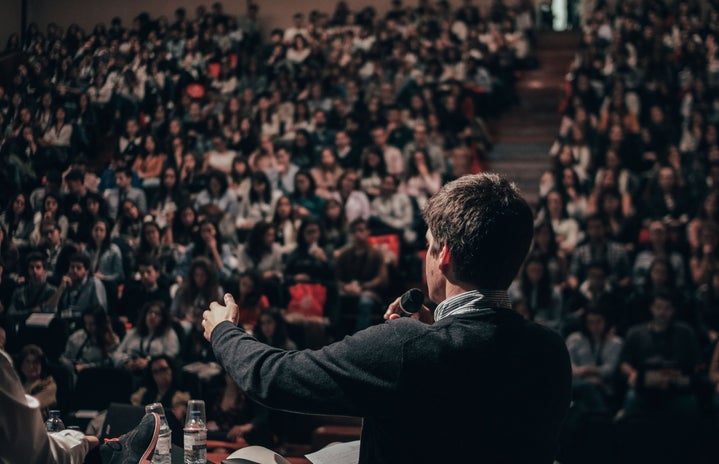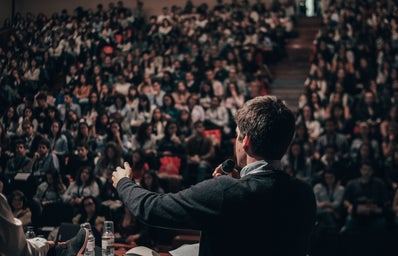From the wonderful minds over at Grey Matters came the awaited night: An Evening with Neuroscience. Outside of Kane Hall, a tasteful balloon arch graced the entrance, and the inside was already buzzing with excitement from eager neuroscience enthusiasts.
It was the fifth of May, 6 PM, when the evening events began. The art gallery and neurotechnology demonstration was set up outside the auditorium, where the human brain demonstration would take place. Next to both tables, was the pleasant surprise of free stickers, pins, and other fantastically designed goodies.
But the interest of the students was drawn further into Kane, towards the real-life brains. Pre-dissected and preserved, they were seen upon a table on the stage before all, the projector allowing even the balcony viewers to observe the anatomy and marvelous design of our three-pound organ. The fact of the night? Dolphins can put half of their brain to sleep, so they can rest but still remain awake. While it would be so useful for a human to accomplish such a feat (especially during finals week), our corpus callosum, unfortunately, connects the two hemispheres.
At 7 PM, the five members of the speaker panel took their seats, with Dr. Leslie-Mazwi moderating. While each question asked was thought-provoking and complicated, there were some answers that especially stood out. Dr. Chowdhury spoke of the amazing observation that all brains are physically the same, but we all do different things. She pointed out that if we could all take our brains out and dissect them, you would see that there is no physical difference between yours and the person next to you. And yet, we all have different opinions, different personalities, different lifestyles, and different experiences.
When asked about the future of neuroscience, Dr. Rollins pointed out the multiple ethical dilemmas present in the field. What are the limits of science? What questions should science not answer, even if we can? The medicalization of behaviors, the usage of fMRI to predict criminals was pointed out to be possible – but should it be used? Honestly, it feels like we are getting closer to a science fiction reality every day.
But there is joy in the science fiction imagination! Dr. Yoo offered up his opinion that one day, medicine will be able to wave a wand, and bodies will be fixed, just like technology from the Star Trek franchise. The future is exciting, and the field of neuroscience is growing in discoveries and knowledge.
There is still so much to be said about the event that can’t be written down. To those interested, you can see a recording of the speaker panel and audience Q&A here.
Stay curious, Huskies!

